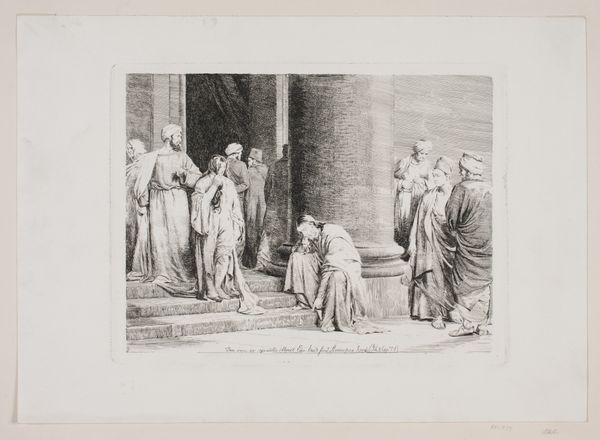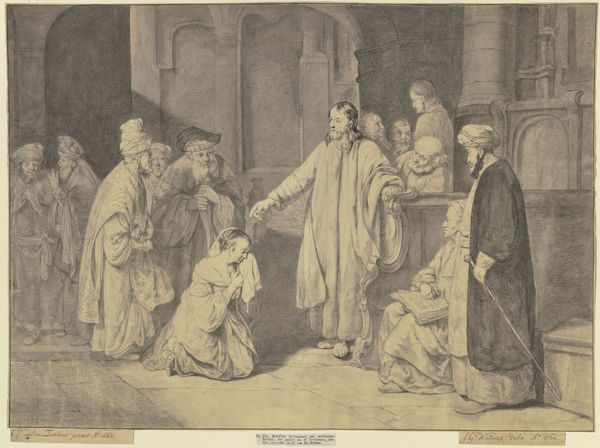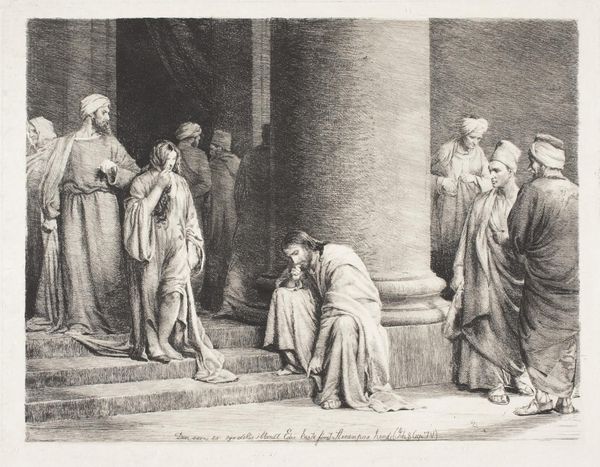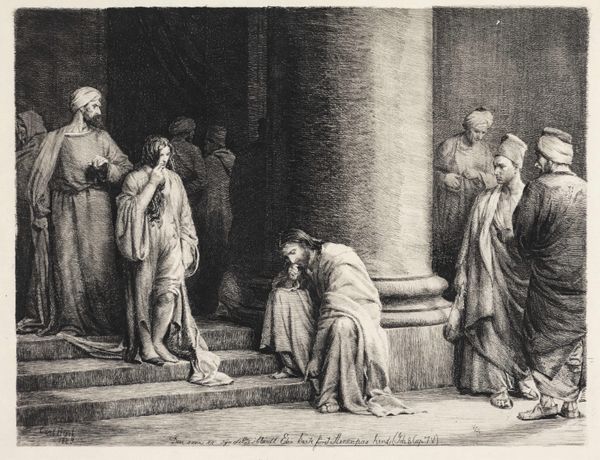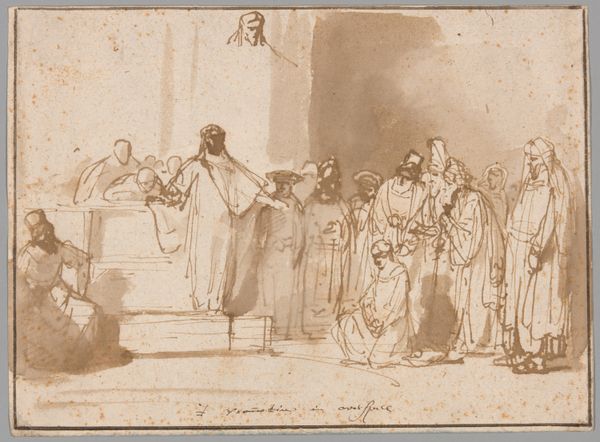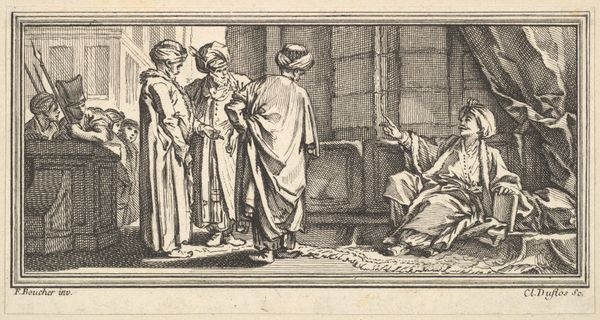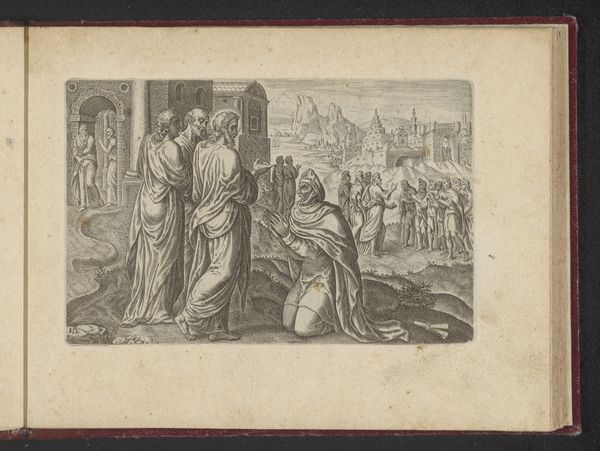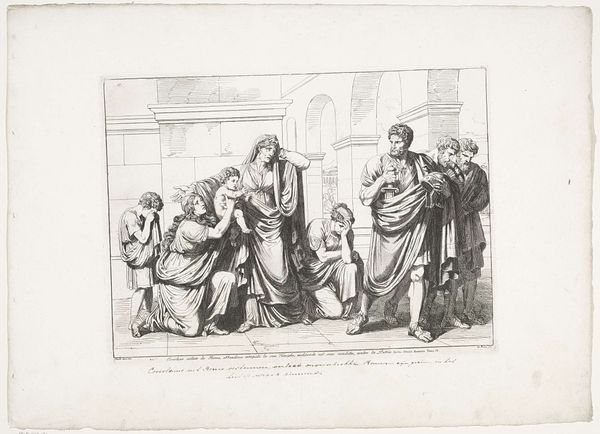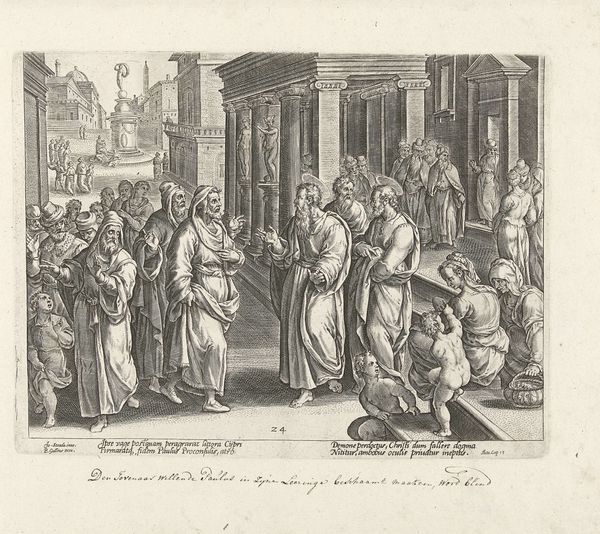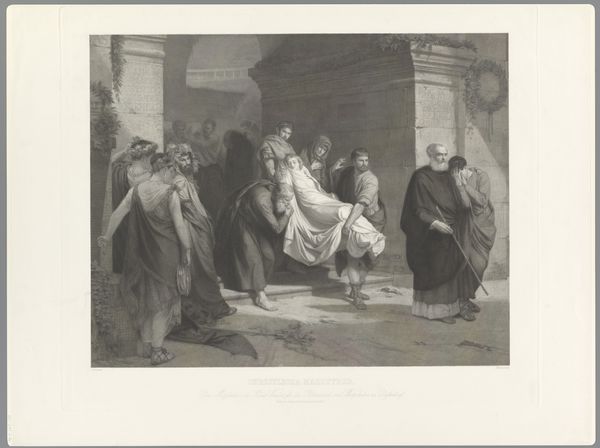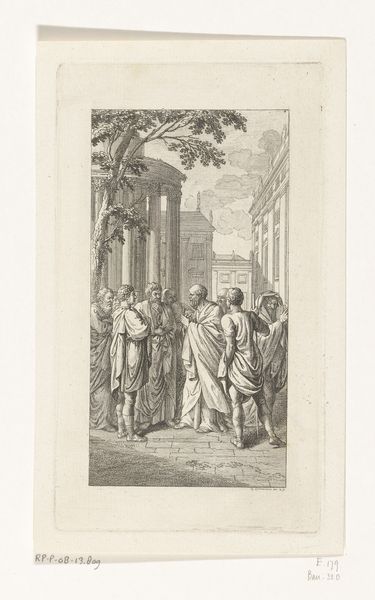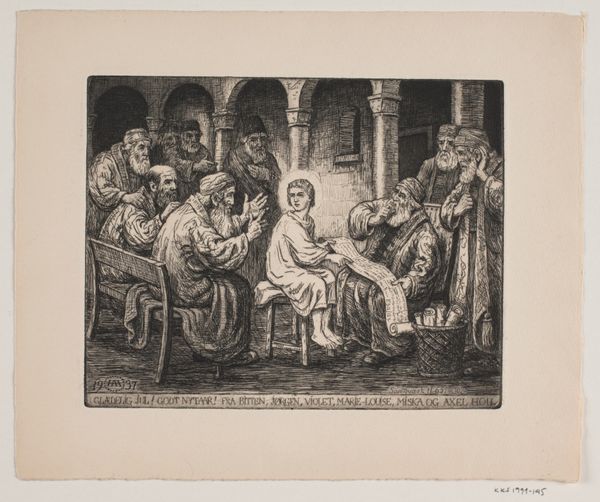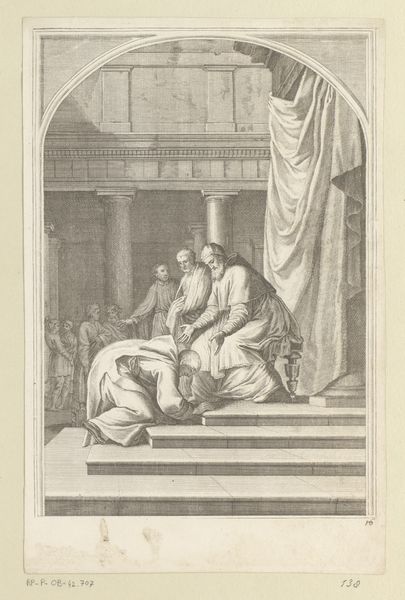
Dimensions: 287 mm (height) x 399 mm (width) (bladmaal), 210 mm (height) x 277 mm (width) (plademaal)
Editor: So, this is Carl Bloch's "Christ and the Woman Taken in Adultery," or "Kristus og Synderinden," from 1889. It looks like a print, maybe etching or engraving, on paper. The whole scene has this very serious, almost oppressive feeling to it. What’s your take on this, what strikes you most? Curator: You know, the beauty of Bloch is how he takes these grand biblical narratives and shrinks them down to human moments. Look at the body language: the bowed head of Christ, the woman’s face hidden in shame, the accusatory stares. It’s a masterclass in dramatic restraint, isn’t it? Editor: Restraint, definitely. Everyone seems frozen, caught in this terrible moment. But it also feels staged, almost theatrical, don't you think? Curator: It is, wonderfully so! That’s the academic in Bloch shining through. He's acutely aware of art history, pulling visual cues from the Renaissance masters – the chiaroscuro, the pyramidal composition. But instead of grand pronouncements, he offers intimate psychology. It makes the viewer an uncomfortable witness, wouldn't you agree? Editor: Uncomfortable, yes. It's hard to know where to look, almost like intruding on a private intervention. Curator: Precisely! It challenges us. Do we condemn, forgive, or simply turn away? Art isn't just about pretty pictures, sometimes it’s about holding up a mirror, albeit a slightly smudged one, to ourselves. I think, Bloch intended just that with this engraving. Editor: That’s powerful. I hadn't thought about it as an intentional act of discomfort. Curator: These aren't just ink lines on paper, these are the weights of moral quandaries and I must say it gave me some insights on art.
Comments
No comments
Be the first to comment and join the conversation on the ultimate creative platform.
